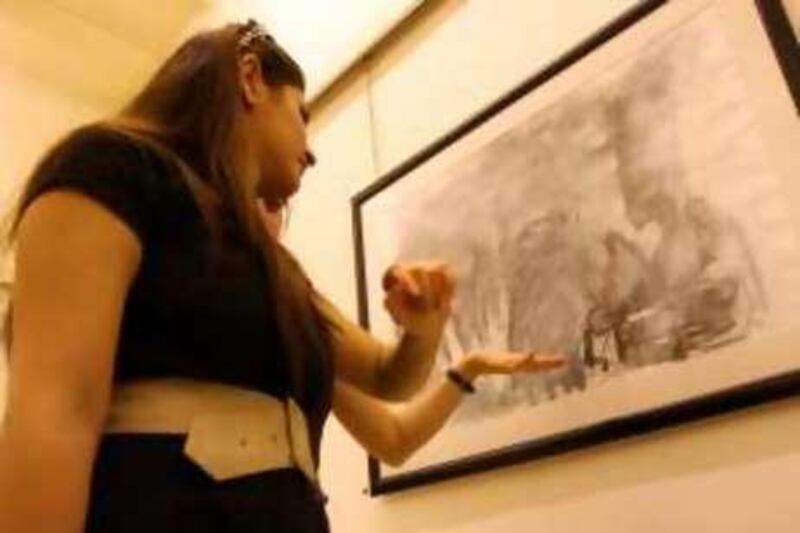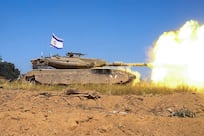AMMAN // Qais al Sindi is designing a hollow statue made of sacks that once contained rice and sugar distributed to Iraqis during the embargoes on Saddam Hussein's reign. The statue, the artist said, will be seated in a posture reminiscent of the portraits of the legendary kings who ruled Mesopotamia thousands of years ago. "What I am trying to depict is the demise of the Iraqis who are descendants of those great kings," he said.
"I want to show people the dramatic changes Iraqis went through since the embargo till the war. "Iraqis have lost everything and what remained is only the rind and that is why the statue is hollow," Mr Sindi said. Since the 2003 US-led war, many Iraqi artists have fled their country as they were unable to work because of the lack of security, but they are using their art to portray the losses the country has suffered.
The migration of artists is a recent one, with Iraqis saying their country was a hub for artistic activities from the 1960s till the 1990s. Despite the eight-year Iran-Iraq war that ended in 1988, art did not suffer as much as it did during 13 years of sanctions and the recent war. The Iraqi Museum of Modern Art in Baghdad, which boasted paintings, sculptures and calligraphy, was looted and damaged by bombing five years ago.
As a result of the war, established Iraqi artists' work is now dominated by melancholy and pessimism. The exhibition by Balasem Mohammed at Dar Al Anda gallery in Amman is called "Immigration to Reality" and mostly depicts Iraqi women sketched with charcoal. Mr Mohammed, who teaches art at a private university, made all his paintings in black and white. "I have turned Iraq into a country of black and white because there is no colour in Iraq," he said. "We are not in a mood for joyful colours."
Mr Mohammed said his exhibition documents the realities as they now are in his homeland. "The situation in Iraq is chaotic and this is what I am trying to show." One of his paintings depicts a funeral with Iraqis carrying a coffin. His work reflects the theme of death and his rejection of the situation in Iraq, he said. Unable to work in their own country because of the war, some artists miss their studios back home. "One's mood differs when you are home surrounded by your own things ? your books, your music," said Shakir al Alousi, another Iraqi artist.
His house and studio was bombed by the US-led coalition in 2004 by mistake. That is when Mr Alousi decided to leave Iraq. Since the war, the artist said his style has not changed. He still paints Iraqi women from the 1950s and the 1960s, but now some of his paintings depict the same women but as sad and lonely with darker colours. Most of Iraq's prominent artists had exhibitions in Jordan, Syria, the Gulf, the United States and Europe. But there are artists who find it hard to make a living in Jordan.
The country has opened its doors to between 500,000 and 700,000 Iraqis in the past five years, but many are concerned about the residency permits along with work and money. Sana al Janabi left Iraq in 2005 and stayed with her husband for two years in Libya before arriving in Jordan last year with her two daughters aged 16 and two. The family has applied for refugee status with the United Nations High Commissioner for Refugees.
Mrs Janabi said she was finding life tough in Jordan. "I find it difficult to sell my work here. I hardly know people since I am new in Jordan" she said. "I am not settled yet." smaayeh@thenational.ae





